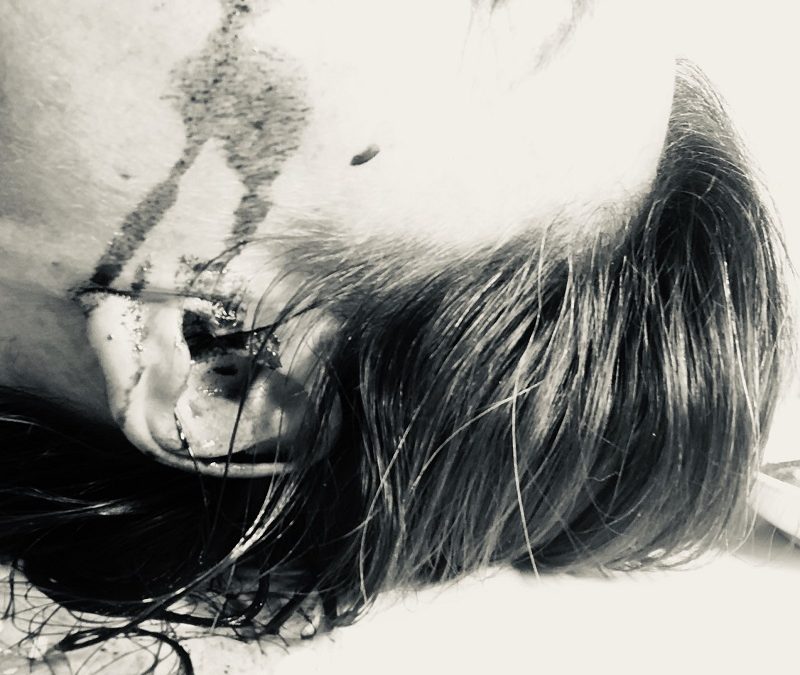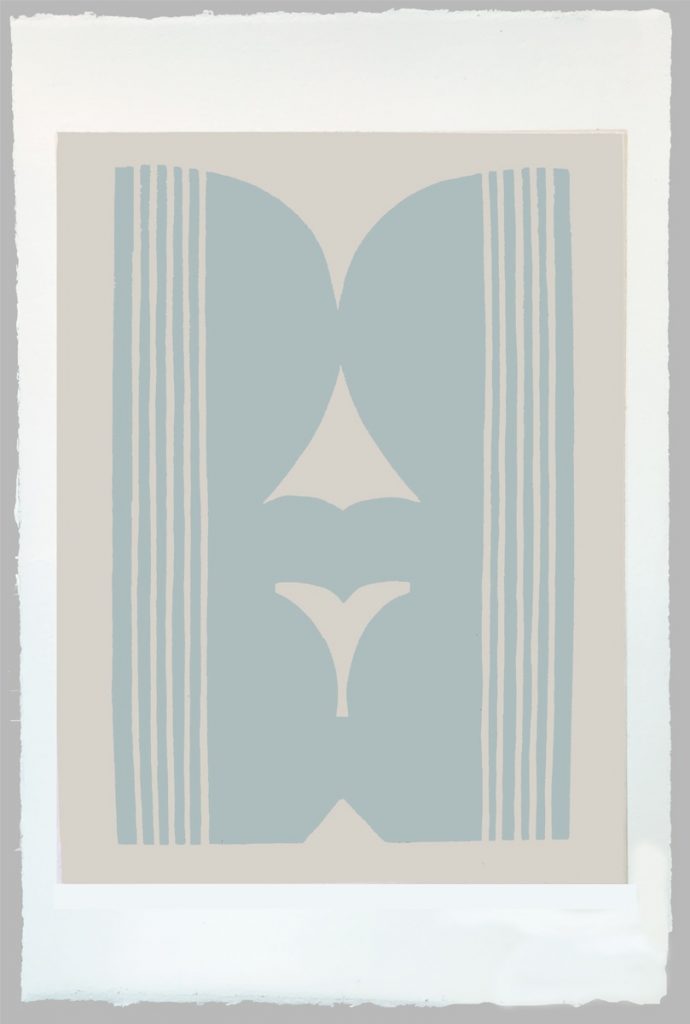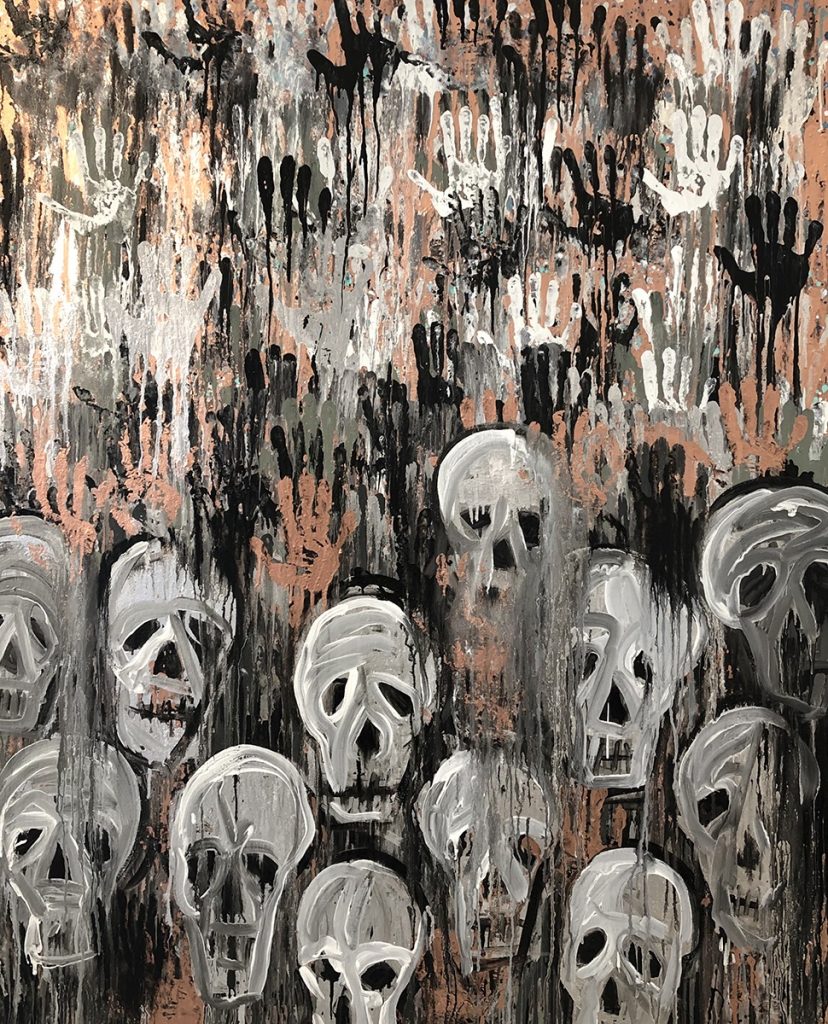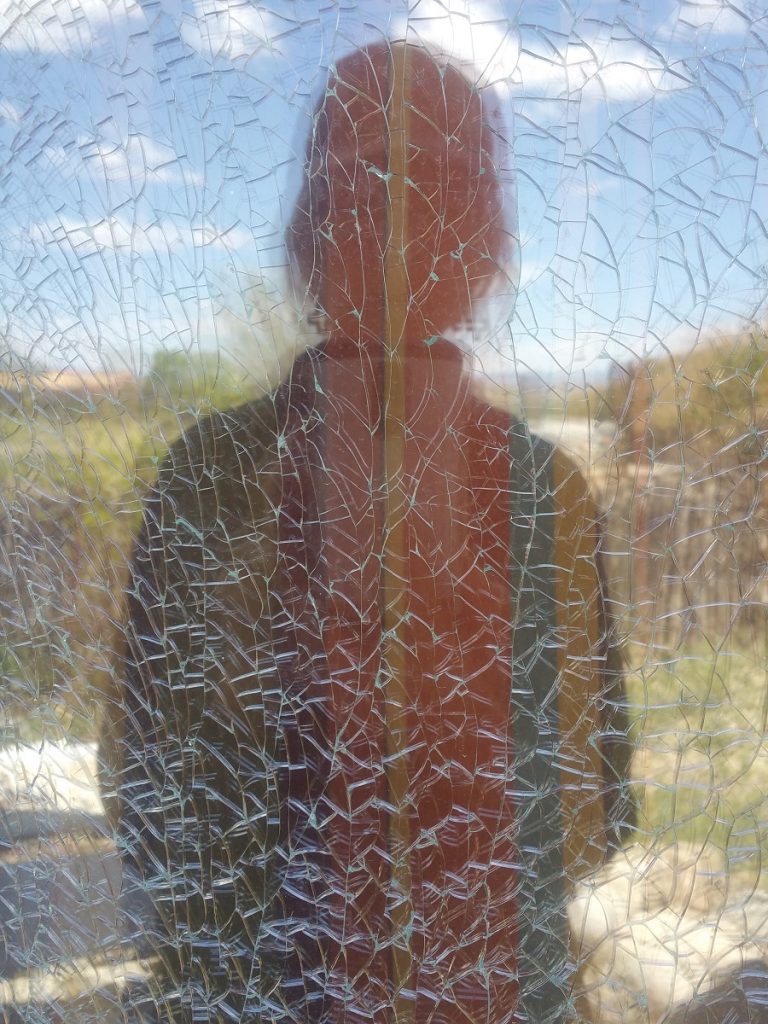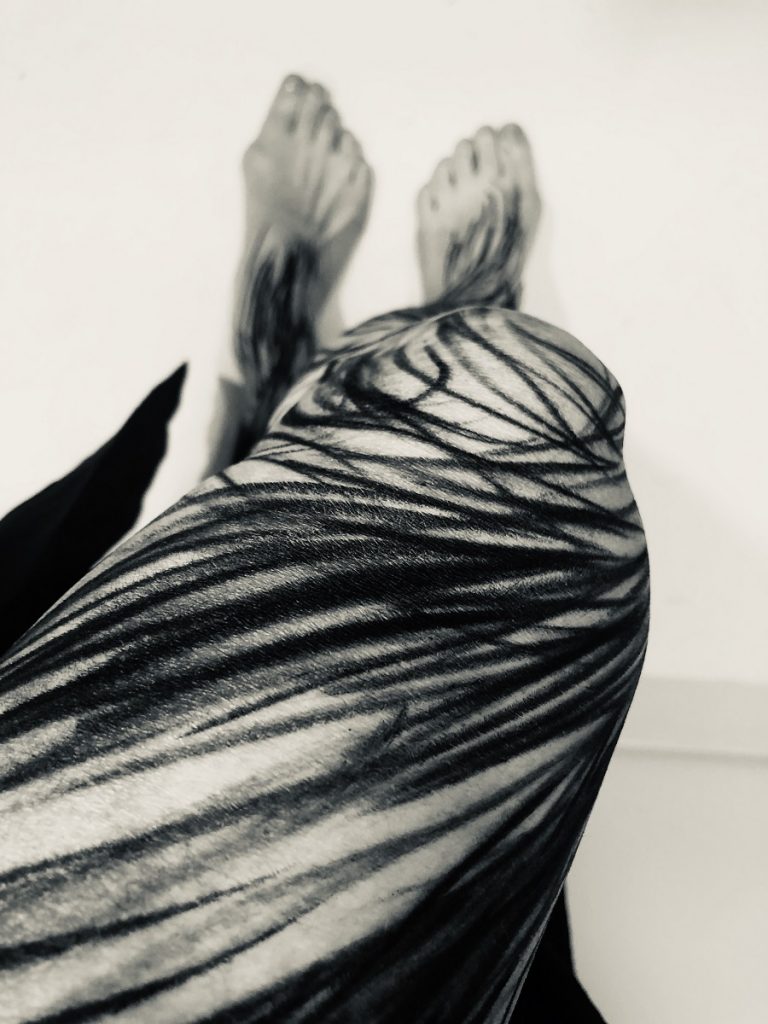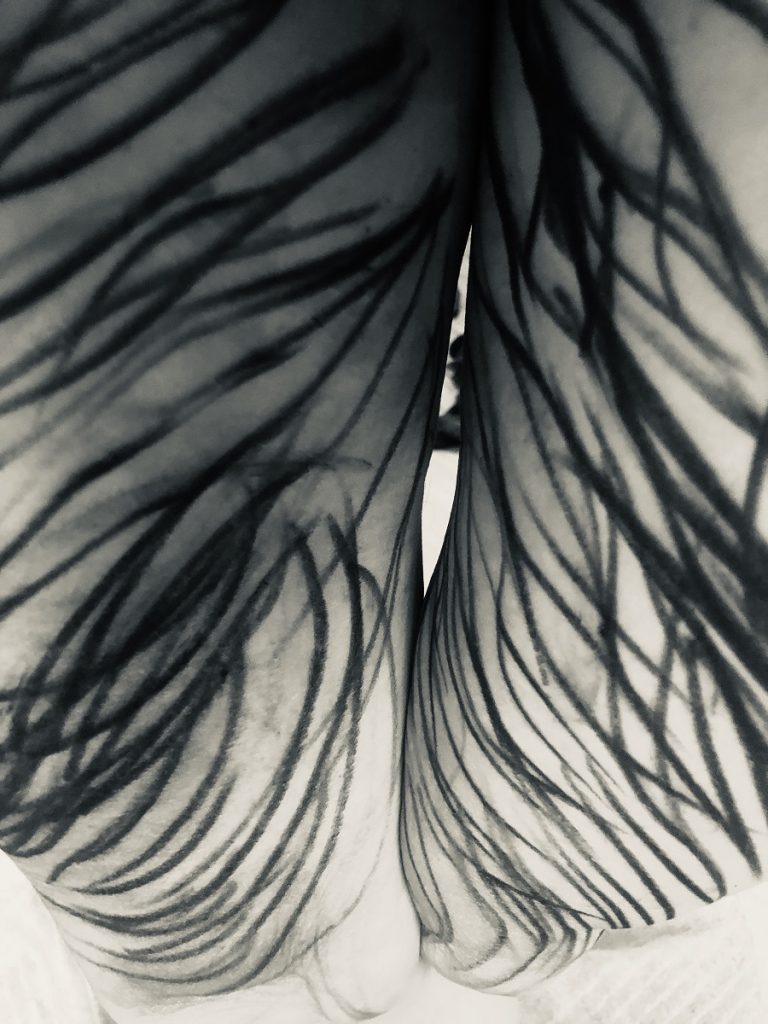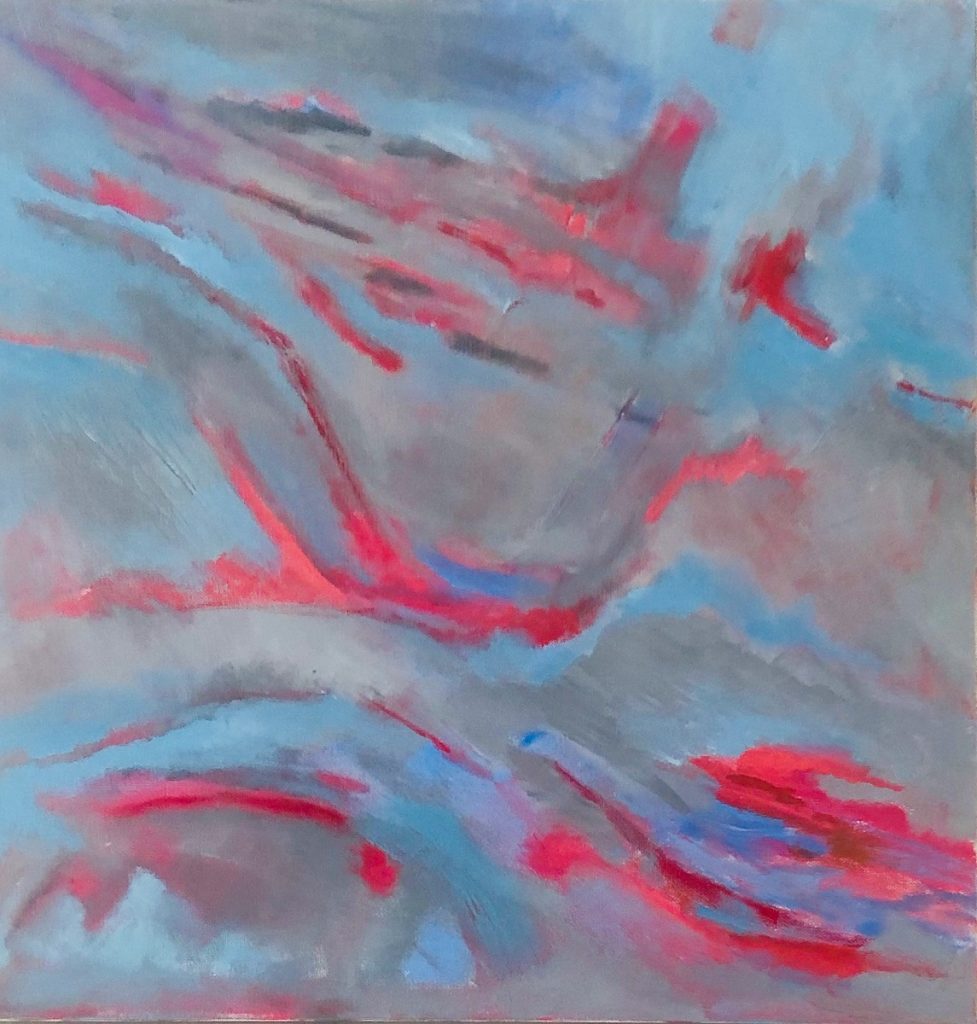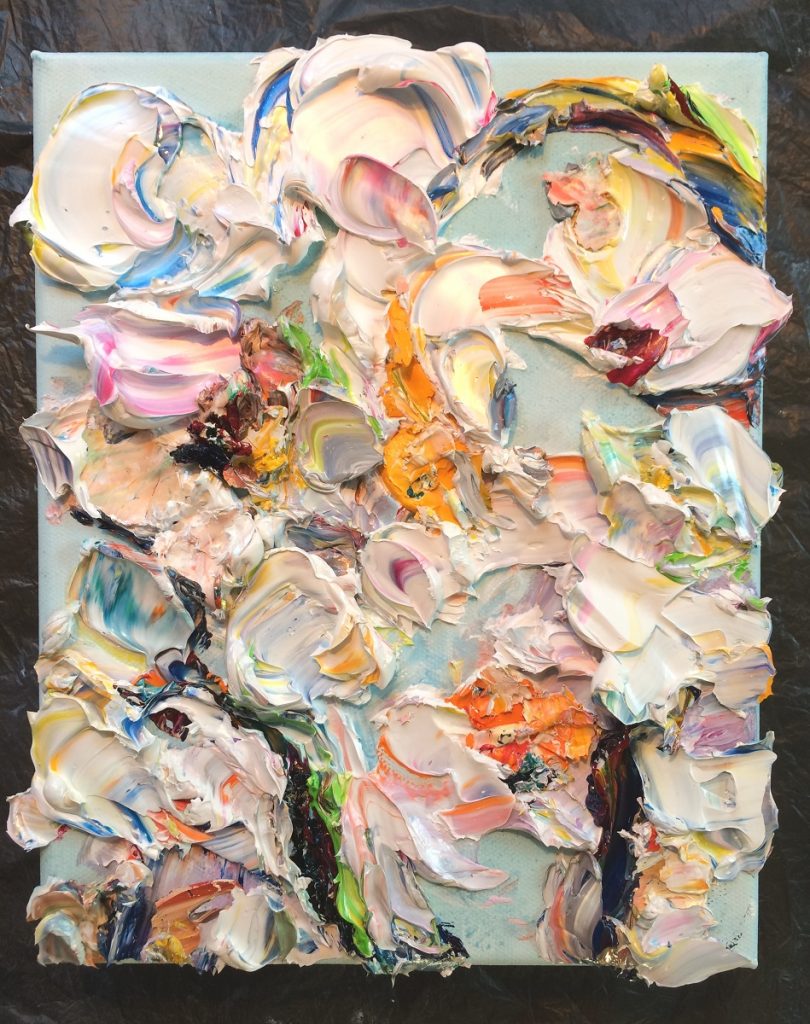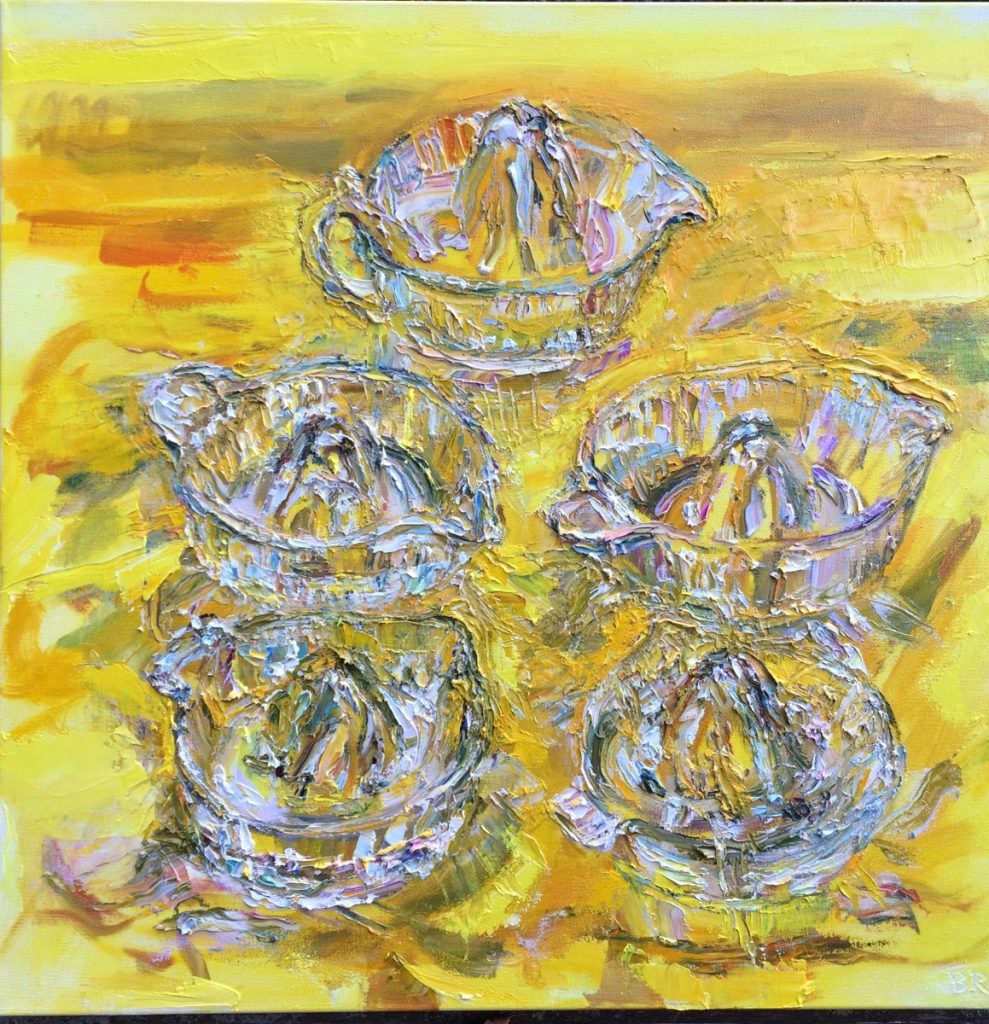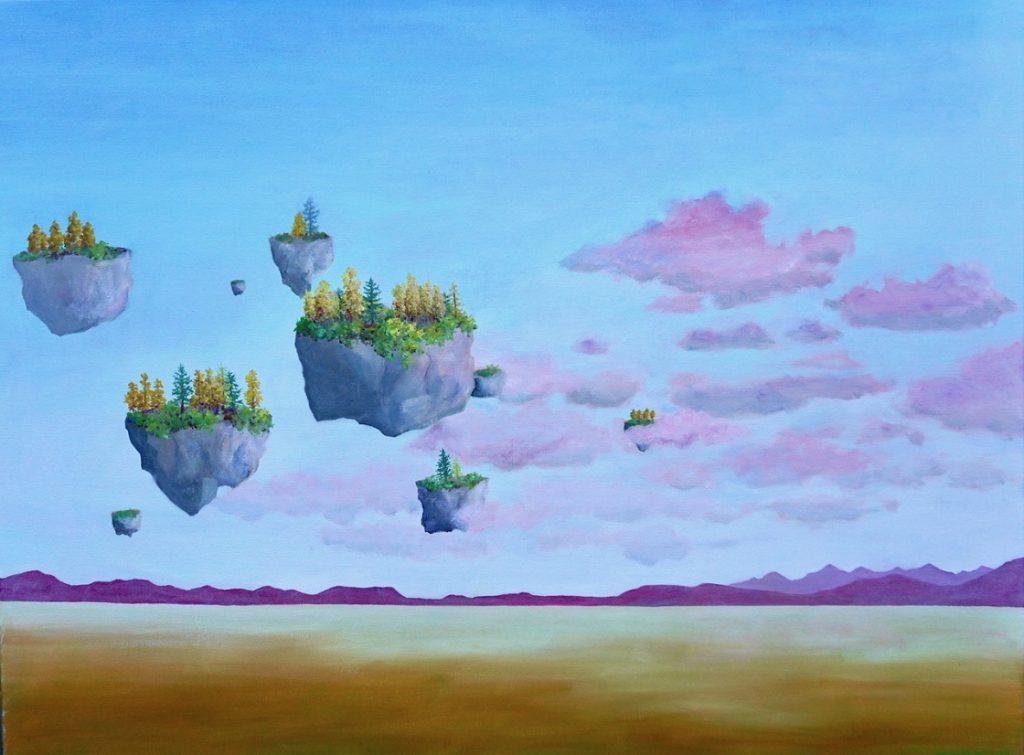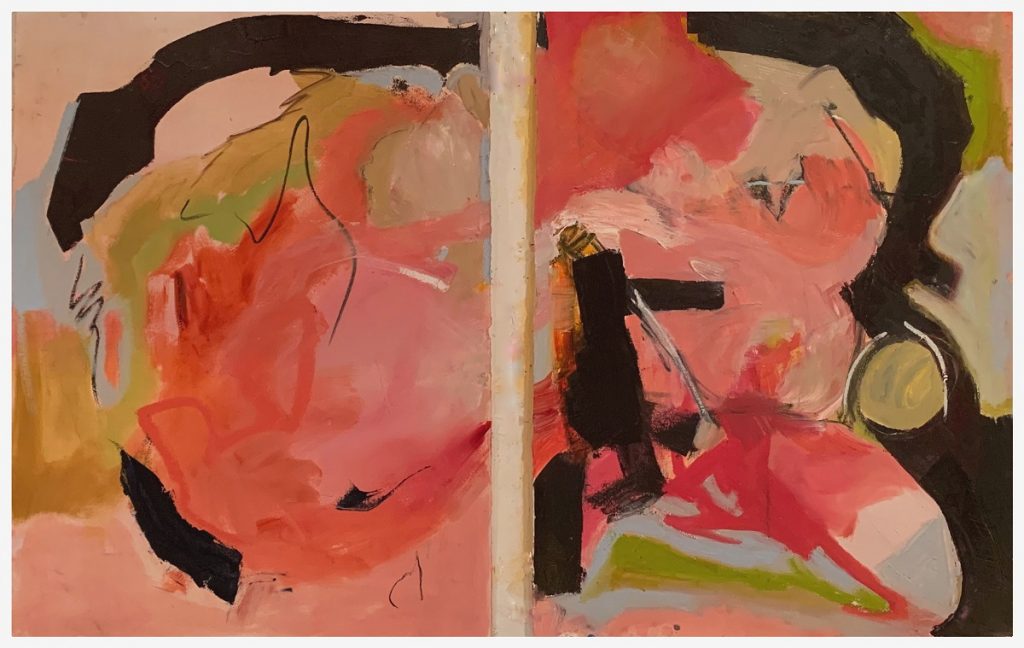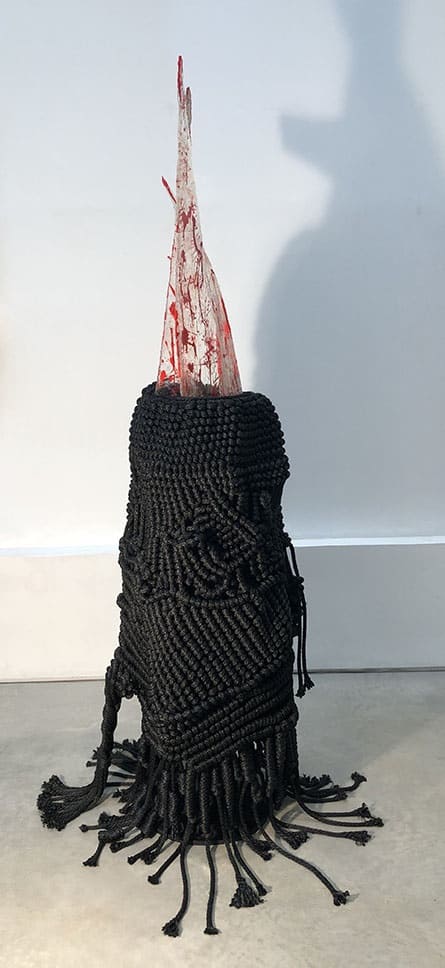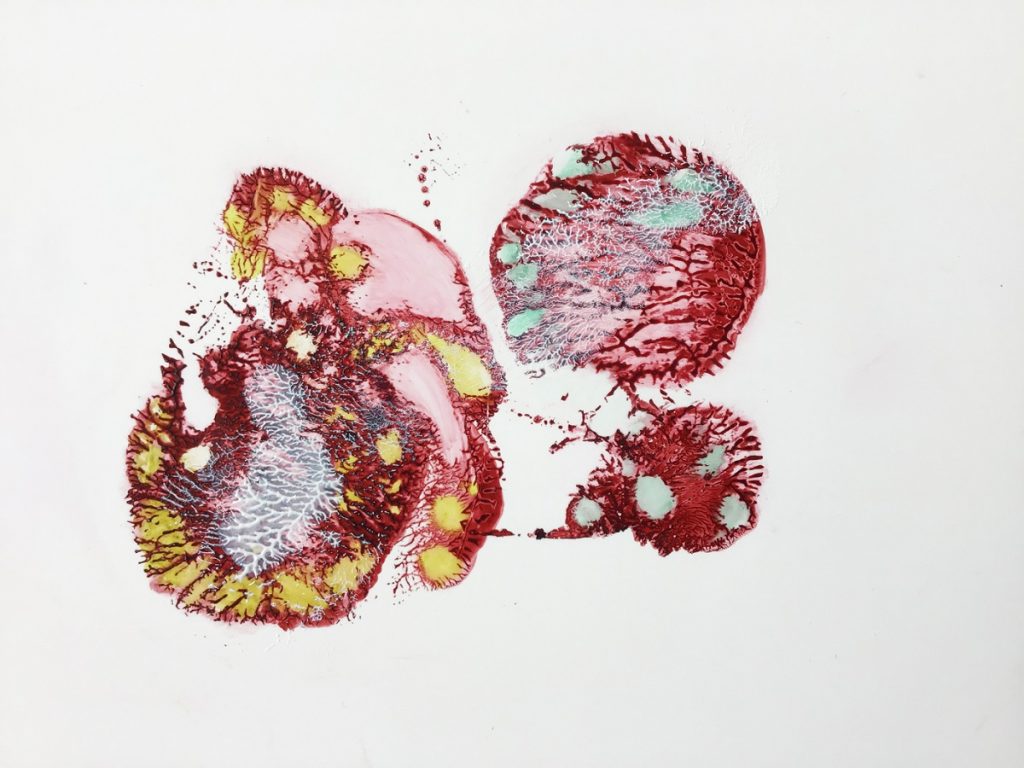In newsletters, I’ve touched on the way artists respond to catastrophe—specifically war and widespread disease—from the Middle Ages to the present. Some, like Gerhard Richter and Anselm Kiefer, may take decades for the horror of their times to percolate into their works. More common is the immediate reaction: Henry Moore’s sketches of Londoners huddled in tunnels during the blitz, Picasso’s horror at the small village bombed during the Spanish civil war, an event that led him to paint Guernica in an astonishing three weeks.
So too with Vasari21 members, who are coping with the coronavirus pandemic in highly individual ways, from spontaneous to meditative, pure abstraction to meticulous magic realism, and in paintings, drawings, and sculptures. Only one thing seems certain: no one will be quite the same after this crisis.
Gwen Gunter: Like so many others, I have found it very difficult to focus long enough to produce work, and that is a totally new state for me. I’ve had the urge to just pause—maybe too much navel gazing, but really questioning the way I’ve been working and striving for so long. And questioning the value and significance of this work. When the urge to get something down did return, the results have been more contemplative and quieter. It’s like the shapes have taken a step back too, and though they are still there, they are wanting to re-evaluate too.
Leslie Parke: I was working on this canvas since the beginning of Covid-19, but it wasn’t working out. Like so many people, I had pandemic fog brain. Then it came into my head that I should make a handprint on the painting. When I did, it didn’t strike me as anything more than a technique to get paint onto the canvas. When I drove home from the studio that night the image of the skulls came to me. It was shortly after I saw the photograph of the mass grave in New York, which I found incredibly disturbing. I thought I’d call it Wash Your Hands.
Annabush Crews: My main work during these days of lockdown is renovation/repair of an old adobe house. Yellow dirt from Blueberry Hill in Taos, NM, is a current obsession, and I have been able to make a hard mud suitable for the project at hand. I’m also unpacking from a move more than five years ago, the process having been delayed by the renovations. It’s thrilling to see some of my artwork anew. I stepped outside for a breather and noticed my reflection in a shattered half of the French doors, the shattering so intricate and endlessly fascinating that I have hesitated having it replaced. As usual, the divided self.
Iris Häussler: For me, it’s strange: I feel like “the world is arriving in my world.” It feels as if the fictitious characters from my installations tap me on the shoulder and remind me that each of them was conceptualized for being a survivalist, leading a solitary life. And now they ask me to “walk the talk.” And beyond me, they even ask the world to do the same. I feel very privileged that this is happening after my children are grown and my responsibilities are much less than decades ago. I allow myself to look back, to reflect on my work and life. What a gift to have time for that. I also explore the physical self-isolation as a way to connect differently with my space, the architecture I live in, my physicality.
We are all developing some ways for communicating, show-and-tell, and staying in touch. Nothing replaces the physical human connection, but our minds might be able to breathe free almost everywhere. So, in this situation of physical isolation, I undertook some explorations using my body in the space of my studio while holding the cell-phone in one hand and taking videos. Below are a couple of stills.
Beth Barry: The anxiety I was feeling made it hard to be engaged in any process unless the outcome was immediate—cooking, mostly. My anxiety has now subsided and I can ,once again, be involved with painting. This work is partially an unconscious response to the coronavirus. For me, it’s a positive feeling of the virus moving through the atmosphere. I tend not to have many literal references in my paintings, but this one was definitely incorporated the virus reference, not known to me until the painting was finished
Beverly Rippel: My husband and I have been sheltering at home for the past eight weeks of this pandemic. On March 26th, I set up my “Dining Room Shelter Studio” and began to make a new art practice routine at home while cooking and virtually keeping in touch with family, other artists, and friends. I have always been inspired by what I see, and because I raise orchids and other flowering houseplants, I began to paint by finding abstract expressions in my white and red Phalanopsis orchids in impasto paint.
By April 3rd I wanted to change and return to the slow hand and eye of past observational painting. For many years I had contemplated painting my five vintage lemon juicers (displayed in the dining room), and this was a good time—as time was something I had lots of. I set up my easel and covered the dining room and adjoining kitchen floor with an old paint tarp, and set up and arranged the five juicers on a yellow plastic bag, adding yellow cellophane on top. I jury-rigged lighting from above. I ended up combining the immediate response of impasto paint with the slower, studied approach that comes from seeing the light reflected on the pressed and cut-glass surfaces.
Tamara English: This painting was completed in February 2020. As a contemporary spiritual artist, my work explores our connection to the sacred in life. The paintings reveal the inner landscape and atmosphere of the inner life. This painting, and subsequent works of the same series, came forth from reflecting on the aspect of our beings that is between our thoughts and feelings, which I refer to as the depth of our being, where we may feel our connection to the divine.
And then came the global pandemic, and most of humanity was required to stay at home and asked to keep our distance from each other. We are living in our interiors, and with many uncertainties. This work is a reminder to me that we are moving through our inner landscapes to the best of our abilities at the moment and that we are all moving through the same sky. Let us demonstrate to the future that we chose to be generous, empathic and compassionate with one another and with ourselves.
Gail Winbury: I made about 20 paintings in the last month or so, each reflecting a different stage of the pandemic and my reaction to the threat and to social distancing and staying in place. When we were in Mexico for a month this winter, we were not clear on the virus at all. By March 11th or so, not only was it sinking in but I was beginning to consider limiting my time in the studio. By March 21st, I was home. As it was for everyone else, some days filled with fear and sorrow and other days with peace and calm. And sometimes it was hour by hour. The final piece was finished with a sense of hope, impatience, exhaustion, and anger with the pandemic, knowing this would not be over for a long time.
Carolanna Parlato: I live near my studio, and so I have recently gone back to working there, but I did shelter at home for five weeks. In any case the routine of working on paper early in the day became a ritual that was helpful as far as quelling my anxiety about social distancing. A good friend passed away recently—a sudden stroke at the age of 63. It’s been hard. Working small on paper has been grounding, to say the least.
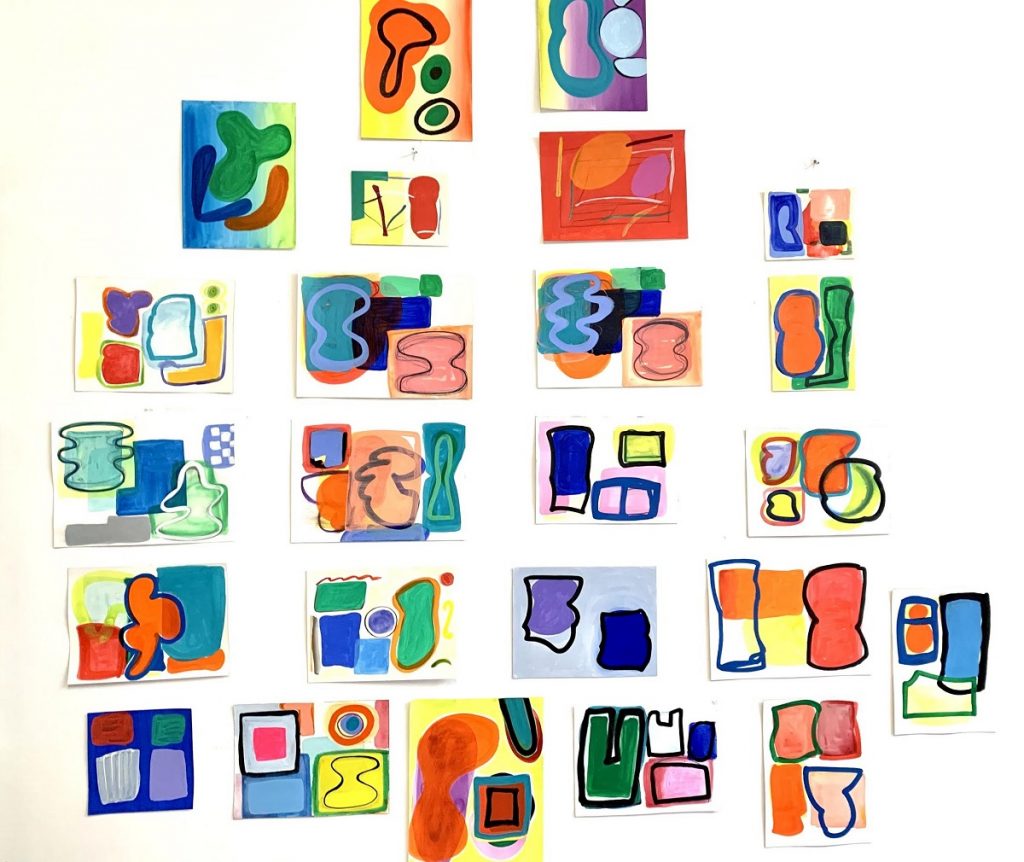
Carolanna Parlato, “Quarantine Studies” (2020), gouache, acrylic and colored pencil on watercolor paper, 11 by 14 and 12 by 9 inches
Niki Ketchman: The top, which is meant to be a visual metaphor for the suffering of victims, I made from resin and acrylic paint. The bottom I macramé’d with black, polypropylene rope. I think of it as a protection, but one that can only go so far—it’s like a robe, blanket, or maybe even a tent, something to comfort and encompass one. But obviously it can only do so much since the top refers to blood, and broken, angular shapes suggest a being in stress.
Elaine Whittaker: This has been a doubly challenging time for me because I was diagnosed with early-stage breast cancer at the end of January. I had a lumpectomy at the end of February, two weeks before the declared pandemic and the order to stay home here in Canada. I was supposed to have a second surgery to excise the leftover cancer cells but most cancer surgeries were cancelled or postponed. So instead the oncologist recommended I start radiation right away, for the full breast and for one week longer. Needless to say, my emotional and physical reactions to the pandemic have been heightened, layered and molded by having cancer at the same time.
Because my past artworks have been about infectious diseases, epidemics, pandemics, and the permeability of the human body, the coronavirus and Covid-19 have been of particular interest to me. I am especially interested in the cellular reaction within our body and the path it takes to enter…the ports of entry, and how it lodges within specific areas and organs. At the same time I am also interested in the mutating cells of cancer and the paths it can take as it breaks away from one site in the body to metastasize in another. These interests are now finding their way into a number of small, intimate, and abstract drawings and paintings.
For forthcoming posts on the site, I want to hear how other Vasari21 members are responding, so email me with a short statement and a couple of images at ajlandi33@gmail.com. Here, for instance, is part of what Gwen Gunter sent: “I’ve had the urge to just pause—maybe too much navel gazing, but really questioning the way I’ve been working and striving for so long. And questioning the value and significance of this work. When the urge to get something down did return, the results have been more contemplative and quieter. It’s like the shapes have taken a step back too, and though they are still there, they are wanting to re-evaluate too.” And this is “Meeting Anew” (2020), acrylic on Arches paper, 15 by 22 inches
Top: Iris Häussler, still from cell-phone video
